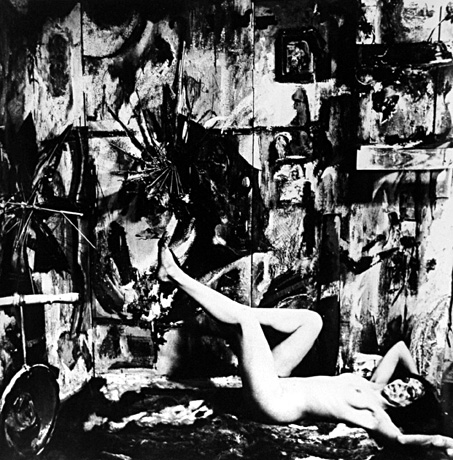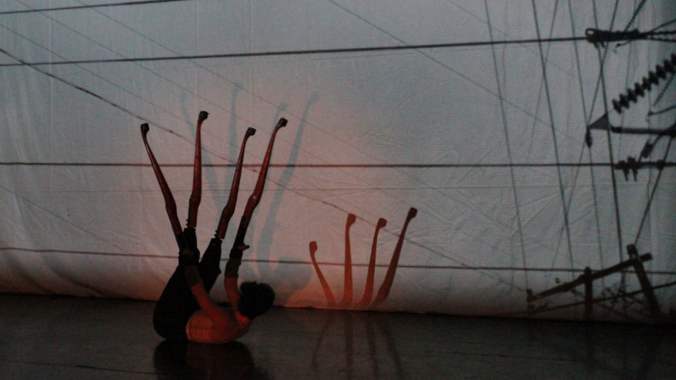When the body is central to artistic production and representation, the personal and the political meet. Performance art itself has therefore been a medium utilised by those often marginalised.
The practice has modernist avant-garde (Dadaist) origins, and was also employed by groups such as Fluxus and the neo avant-garde ‘happenings’ of the late 1950s and early 1960s.
Feminism however, played a significant role in the continuation of the medium into the latter part of the twentieth century. Performance has been especially relevant to female artists who aimed to counter female stereotypes while having artistic agency.

(Carolee Schneemann, Eye Body #1 1963)
The rise in the use of performance art came at an era of calls for women’s liberation. By utilising the medium artists were able to question the ‘subject-object’ relationship inherent in many male produced artworks. The female performance artist could also subvert assumptions of the perceived artistic masculine mastery of high art, by emphasizing her own production and agency.
One of the forerunners of feminist performance art is Carolee Schneemann. In her ground breaking series Eye Body (1963), the artist presented herself as paint smeared and naked among various objects. The image was not one of passivity but of confrontation in her reclamation and active embodiment of the female nude.
The medium has been utilised to highlight many issues of ‘difference’. As matters such as gender role have been explored within evolving feminist analysis, so in turn, have debates arisen around selfhood and identity in conjunction with ideas of ‘otherness’ surrounding culture, race, disability and locale, for example.
Cuban artist Ana Mendieta’s performance work has explored not only her experience of womanhood but ideas of her identity in terms of place and ethnicity .

(Ana Mendieta, Imagen de Yagul, 1973)
The artist created many outdoor performances in which the focus is on the landscape and goddess-like female body. The use of the medium enabled the work to be read in terms of empowered and iconic female imagery in addition to the transitory nature of life and meaning. The work has been perceived as inspired by Mendieta’s feminist politics, Cuban heritage and exiled status.

(Lisa Bufano, Home is not home , 2011)
Interdisciplinary artist Lisa Bufano, whose lower legs and fingers were amputated when she was 21 due to illness, also utilised performance. Despite the various props and prosthetics the artist used, the medium enabled an intimate focus on the body as a central theme of her work. This, in turn, raised particular questions on perceptions of the female body in terms of disability, in addition to the artist’s own telling of her personal experience.
Women artists utilised performance as a medium as it enabled and reflected self-ownership of the body and significantly – the female body, which had been represented and controlled for centuries by male artists.
Reblogged this on Lise's blog.
LikeLike